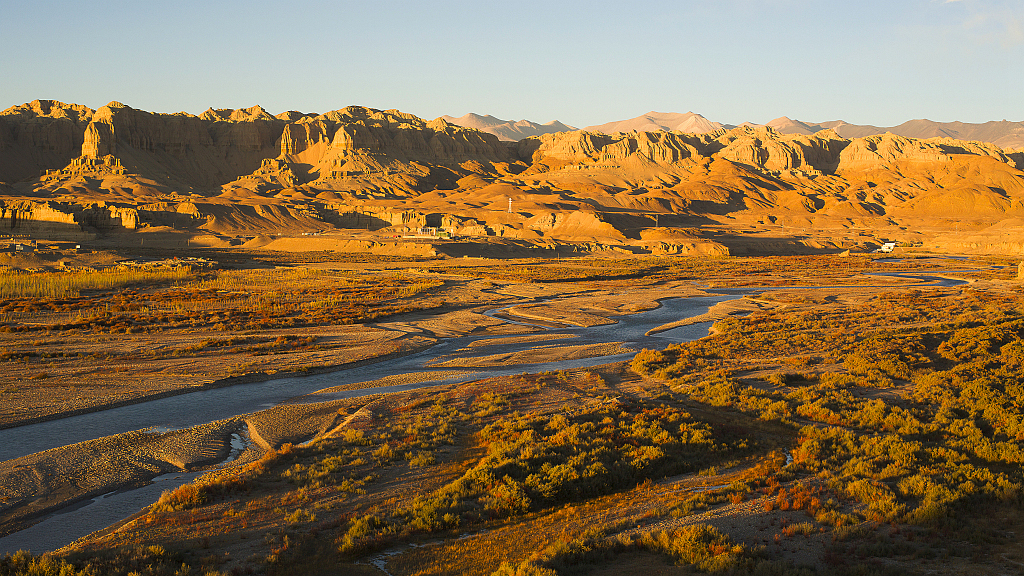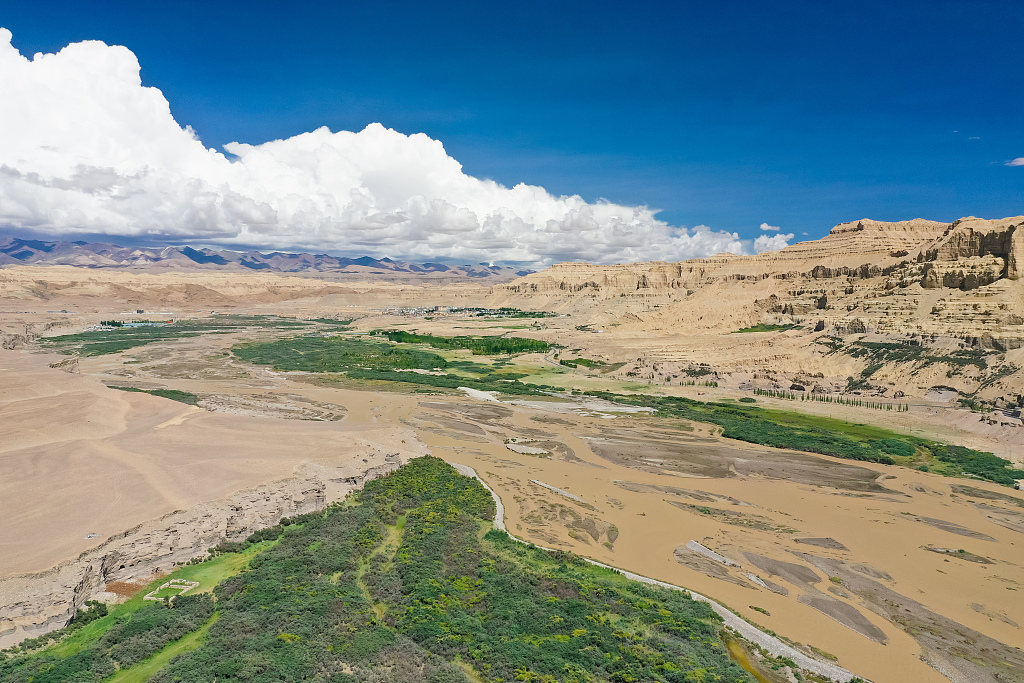01:23

Chinese archaeologists have unveiled several new discoveries during a recent excavation at the Qulong Site in southwest China's Tibet Autonomous Region, providing key clues to the earliest indigenous culture on the world's highest plateau.
Archaeologists from the Tibet Autonomous Region Cultural Relics Protection Research Institute, Shaanxi Provincial Archaeological Research Institute and Northwest University have spent over four years conducting a series of archaeological excavations and research at the prehistoric Qulong Site, which is composed of two large-scale ruins of concentrated settlements, covering more than 100,000 square meters.
Dating back to the 8th century BC, the Qulong Site, located at 4,400 meters above sea level, features rich remains and cultural relics, including cave residences, courtyards, houses, stone relics, pagodas, grottoes and Buddhist temples.
In some tombs dating back 2800 to 2500 years, archaeologists unearthed 98 pieces and 16 types of perforated conch ornaments as of August 2020, marking the largest number of South Asian conches ever found on the Qinghai-Tibet Plateau and in surrounding areas.

The Qulong Site in Zanda County, Ngari Prefecture, southwest China's Tibet Autonomous Region. /CFP
The Qulong Site in Zanda County, Ngari Prefecture, southwest China's Tibet Autonomous Region. /CFP
It indicates frequent cultural exchanges between the western part of the Qinghai-Tibet Plateau and ancient South Asia.
At the site in Zanda County, Ngari Prefecture, experts also made headway in figuring out the significance of huge boulders scattered around the highland, including foundation stones for both camping and permanent residences, in the outlying area of the two concentrated settlements.
"Such ruins of stones and huge boulders can be found across the whole Eurasian continent. In the northern steppes, they are especially common. In Tibet, we found that most of them are in the north of the Qiangtang and Ngari regions," said Zhang Jianlin, an archaeologist and professor from Northwest University.
The archaeologists also learned more about the array of boulders on the banks of a nearby lake. The structures, which can be traced back nearly 3,000 years, are believed to be a sign of the region's earliest links with grassland tribes in the north.
(Video edited by Hong Yaobin. Cover: View of the Ngari Prefecture, Tibet, China. /CFP)

